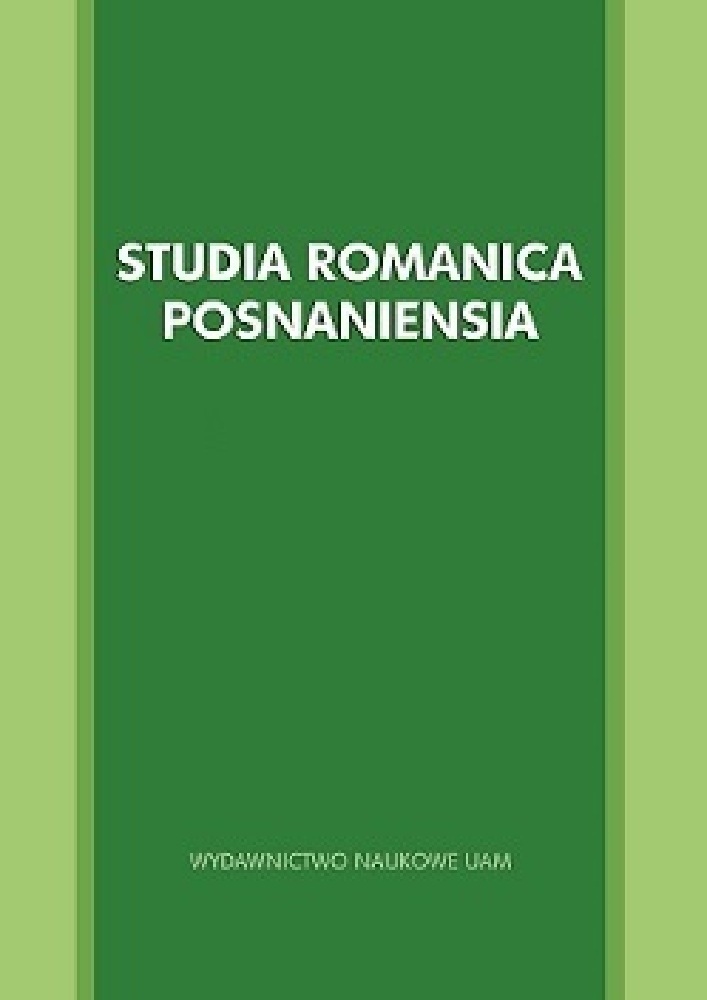Abstrakt
The objective of this contribution is to contrastively analyze the currency of words formed by the frac- tolexeme -gate in French and Czech languages. Before presenting the results of our research that relies especially on data derived from the SketchEngine (Czech Web 2017; French Web 2017) corpora, we find it necessary to address theoretical questions to frame the concept of fractocomposition in current linguistic studies. We have borrowed the term fractocomposition from the French linguist Jean-François Sablay- rolles (2019, p. 149), who defines it as a case of compounds “one of whose elements is a fractolexeme, a fragment of lexie which is valid for the entire lexie”. However, in our discussion we note also other terms that are also used to denote the same concept.
Bibliografia
Bacot, P. (2019). Guide de culture politique - Les clés pour comprendre le discours politique français. Paris : Éditions Ellipses.
Clauzure, É. (1999). De l'instabilité du sens des composés devenir d'un élément en composition : exemple de gate. Anglophonia/Sigma, 3 (6) https://doi.org/10.4000/anglophonia.687 DOI: https://doi.org/10.4000/anglophonia.687
Fradin, B. (2000). Combining forms, blends and related phenomena. In U. Doleschal & A.M. Thornton (eds.), Extragrammatical and Marginal Morphology (pp. 11-59). München : Lincom Europa.
Fradin, B. (2015). Les mots-valises : jeux et enjeux. Neologica, 9, 36-60.
Fradin, B., Montermini, F., & Plénat, M. (2009). Morphologie grammaticale et extragrammaticale. In B. Fradin, F. Kerleroux, & M. Plénat (eds). Aperçus de morphologie du français (pp. 21-45). Paris : Presses Universitaires de Vincennes.
Gaudin, F. & Guespin, L. (2000). Initiation à la lexicologie française. De la néologie aux dictionnaires, coll. « Champs linguistiques. Manuels ». Bruxelles : Éditions Duculot.
Lapaire, J.-R. & Rotgé, W. (1994). Séminaire pratique de linguistique anglaise. Toulouse : Presses Uni- versitaires du Mirail.
Radimský, J. (2006). Les composés italiens actuels. Paris : Cellule de recherche en linguistique.
Radimský, J. (2007). Un confixe autonome est-il un substantif épithète ? Remarques à propos de la directionnalité dans la morphologie lexicale. Écho des études romanes, vol. III (1-2), 109-122. České Budějovice : Université de Bohême du Sud. DOI: https://doi.org/10.32725/eer.2007.009
Radimský, J. (2011). Konfixace v současné italské slovotvorbě. Časopis pro moderní filologii, 93 (2), 104-124.
Sablayrolles, J.-F. (2017). Créer des mots français d'aujourd'hui. Paris : Éditions Garnier.
Sablayrolles, J.-F. (2019). Comprendre la néologie. Conceptions, analyses, emplois. Limoges : Lambert Lucas.
Tournier, J. (1985). Introduction descriptive à la lexicogénétique de l'anglais contemporain. Paris : Champion ; Genève : Slatkine.
Tournier, N. & Tournier, J. (2009). Dictionnaire de lexicologie française. Paris : Ellipses.
Dictionnaire Larousse. https://www.larousse.fr.
Dictionnaire Le Petit Robert. https://petitrobert.lerobert.com/robert.asp. Dictionnaire Usito. https://usito.usherbrooke.ca.
Liste des scandales et polémiques « -gate ». https://fr.xcv.wiki/wiki/List_of_%22-gate%22_scandals.
Oxford English Dictionary. https://www.oed.com. SketchEngine. https://sketchengine.eu/.
Wikipédia. https://www.wikipedia.fr. Wiktionnaire. https://fr.wiktionary.org/.
Licencja
Prawa autorskie (c) 2022 Radka Mudrochová, Dagmar Koláříková

Utwór dostępny jest na licencji Creative Commons Uznanie autorstwa – Użycie niekomercyjne – Na tych samych warunkach 4.0 Międzynarodowe.
- Autor oświadcza, że przysługują mu osobiste i majątkowe prawa autorskie do Utworu oraz że nie są one ograniczone w zakresie objętym niniejszą Umową, oraz że utwór jest dziełem oryginalnym i nie narusza majątkowych lub osobistych praw autorskich innych osób.
- Autor udziela Uniwersytetowi im. Adama Mickiewicza w Poznaniu niewyłącznej i nieodpłatnej licencji na korzystanie z Utworu bez ograniczeń terytorialnych i przez czas nieokreślony na następujących polach eksploatacji:
2.1. wytwarzanie określoną techniką egzemplarzy Utworu, w tym techniką drukarską, reprograficzną, zapisu magnetycznego oraz techniką cyfrową;
2.2. wprowadzanie do obrotu, użyczenie lub najem oryginału albo egzemplarzy Utworu;
2.3. publiczne wykonanie, wystawienie, wyświetlenie, odtworzenie oraz nadawanie i reemitowanie, a także publiczne udostępnianie Utworu w taki sposób, aby każdy mógł mieć do niego dostęp w miejscu i w czasie przez siebie wybranym;
2.4. włączenie Utworu w skład utworu zbiorowego;
2.5. wprowadzanie Utworu w postacie elektronicznej na platformy elektroniczne lub inne wprowadzanie Utworu w postaci elektronicznej do Internetu, Intranetu, Extranetu lub innej sieci;
2.6. rozpowszechnianie Utworu w postaci elektronicznej w Internecie, Intranecie, Extranetu lub innej sieci, w pracy zbiorowej jak również samodzielnie;
2.7. udostępnianie Utworu w wersji elektronicznej w taki sposób, by każdy mógł mieć do niego dostęp w miejscu i w czasie przez siebie wybranym, w szczególności za pośrednictwem Internetu, Intranetu, Extranetu lin innej sieci;
2.8. udostępnianie Utworu zgodnie z wzorcem licencji Attribution-NonCommercial-ShareAlike 4.0 International (CC BY-NC-SA 4.0) lub innej wersji językowej tej licencji lub którejkolwiek późniejszej wersji tej licencji, opublikowanej przez organizację Creative Commons. - Autor zezwala Uniwersytetowi im. Adama Mickiewicza w Poznaniu na:
3.1. nieodpłatne korzystanie i rozporządzanie prawami do opracowań Utworu i tymi opracowaniami.
3.2. wysyłanie metadanych Utworu oraz Utworu do komercyjnych i niekomercyjnych baz danych indeksujących czasopisma. - Autor upoważnia i zobowiązuje Uniwersytet im. Adama Mickiewicza w Poznaniu do udzielania osobom trzecim dalszych licencji (sublicencji) do Utworu oraz do innych materiałów, w tym utworów zależnych lub opracowań zawierających lub powstałych w oparciu o Utwór, przy czym postanowienia takich sublicencji będą tożsame z wzorcem licencji Attribution-NonCommercial-ShareAlike 4.0 International (CC BY-NC-SA 4.0) lub innej wersji językowej tej licencji lub którejkolwiek późniejszej wersji tej licencji, opublikowanej przez organizację Creative Commons Tym samym uprawnia wszystkich zainteresowanych do korzystania z utworu wyłącznie w celach niekomercyjnych pod następującymi warunkami:
4.1. uznanie autorstwa czyli obowiązek podania wraz z rozpowszechnionym utworem informacji, o autorstwie tytule, źródle (odnośniki do oryginalnego utworu, doi) oraz samej licencji;
4.2. na tych samych warunkach, wolno rozpowszechniać utwory zależne jedynie na licencji identycznej to tej, na jakiej udostępniono utwór oryginalny. - Uniwersytet im. Adama Mickiewicza w Poznaniu jest zobowiązany do:
5.1. udostępniania Utworu w taki sposób, aby każdy mógł mieć do niego dostęp w miejscu i w czasie przez siebie wybranym bez ograniczeń technicznych;
5.2. poprawnego informowania osób, którym Utwór będzie udostępniany o udzielonych im sublicencjach w sposób umożliwiający odbiorcom zapoznanie się z nimi.
Pozostałe postanowienia
- Uniwersytet im. Adama Mickiewicza w Poznaniu zachowuje prawo do czasopisma jako całości (układ, forma graficzna, tytuł, projekt okładki, logo itp.).

